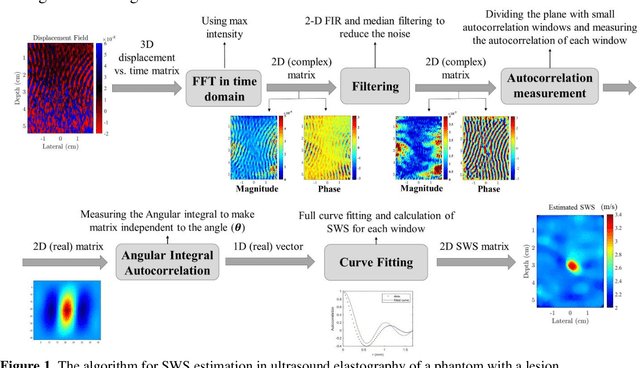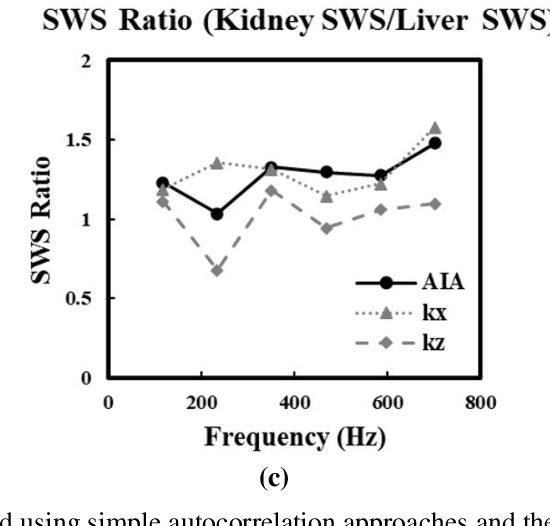Hamidreza Asemani
Difference Autocorrelation: A Novel Approach to Estimate Shear Wave Speed in the Presence of Compression Waves
Jun 18, 2024



Abstract:In share wave elastography (SWE), the aim is to measure the velocity of shear waves, however unwanted compression waves and bulk tissue motion pose challenges in evaluating tissue stiffness. Conventional approaches often struggle to discriminate between shear and compression waves, leading to inaccurate shear wave speed (SWS) estimation. In this study, we propose a novel approach known as the difference autocorrelation estimator to accurately estimate reverberant SWS in the presence of compression waves and noise. Methods: The difference autocorrelation estimator, unlike conventional techniques, computes the subtraction of velocity between neighboring particles, effectively minimizing the impact of long wavelength compression waves and other wide-area movements such as those caused by respiration. We evaluated the effectiveness of the integrated difference autocorrelation (IDA) by: (1) using k-Wave simulations of a branching cylinder in a soft background, (2) using ultrasound elastography on a breast phantom, (3) using ultrasound elastography in the human liver-kidney region, and (4) using magnetic resonance elastography (MRE) on a brain phantom. Results: By applying IDA on the unfiltered contaminated wave fields of simulation and elastography experiments, the estimated SWSs are in good agreement with the ground truth values (i.e., less than 2% error for the simulation, 9% error for ultrasound elastography of breast phantom and 19% error for MRE). Conclusion: Our results demonstrate that IDA accurately estimates SWS, revealing the existence of a lesion, even in the presence of strong compression waves. Significance: IDA exhibits consistency in SWS estimation across different modalities and excitation scenarios, highlighting its robustness and potential clinical utility.
Angular Integral Autocorrelation for Speed Estimation in Shear Wave Elastography
Feb 02, 2024



Abstract:The utilization of a reverberant shear wave field in shear wave elastography has emerged as a promising technique for achieving robust shear wave speed (SWS) estimation. However, accurately measuring SWS within such a complex wave field remains challenging. This study introduces an advanced autocorrelation estimator based on angular integration known as the angular integral autocorrelation (AIA) approach to address this issue. The AIA approach incorporates all the au-tocorrelation data from various angles during measurements, resulting in enhanced robustness to both noise and imperfect distributions in SWS estimation. The effectiveness of the AIA estimator for SWS estimation is first validated using a k-Wave simulation of a stiff branching tube in a uniform background. Furthermore, the AIA estimator is applied to ultrasound elastography experiments, MRI experiments, and OCT studies across a range of different excitation frequencies on tissues and phantoms, including in vivo scans. The results verify the capacity of the AIA approach to enhance the accuracy of SWS estimation and SNR, even within an imperfect reverberant shear wave field. Compared to simple autocorrelation approaches, the AIA approach can also successfully visualize and define lesions while significantly improving the estimated SWS and SNR in homogeneous background materials, thus providing improved elastic contrast between structures within the scans. These findings demonstrate the robustness and effectiveness of the AIA approach across a wide range of applications, including ultrasound elastography, MRE, and OCE, for accurately identifying the elastic properties of biological tissues in diverse excitation scenarios.
 Add to Chrome
Add to Chrome Add to Firefox
Add to Firefox Add to Edge
Add to Edge